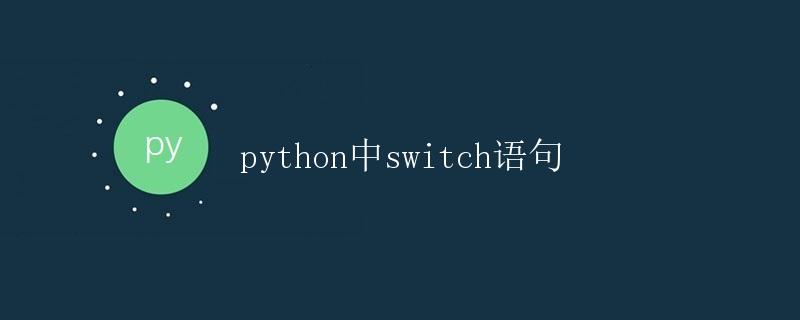python中switch语句

在许多编程语言中,都有提供类似于switch语句的控制结构,用于根据不同的条件执行不同的代码块。然而,Python并没有提供内置的switch语句,但我们可以通过一些方式来实现类似的功能。
使用字典实现switch语句
一种常见的实现方式是使用字典来模拟switch语句的功能。我们可以将不同的条件作为字典的key,对应的处理逻辑作为value。
def switch_case(argument):
switcher = {
1: "One",
2: "Two",
3: "Three"
}
return switcher.get(argument, "Invalid")
# 测试
print(switch_case(1))
print(switch_case(2))
print(switch_case(3))
print(switch_case(4))
输出:
One
Two
Three
Invalid
在上面的代码中,我们定义了一个switch_case函数,通过传入不同的参数来实现类似switch语句的功能。如果传入的参数在字典中找到对应的值,则返回该值,否则返回”Invalid”。
使用函数实现switch语句
另一种实现方式是使用函数来模拟switch语句的功能。我们可以定义多个不同的处理函数,根据条件调用对应的函数。
def case_one():
return "One"
def case_two():
return "Two"
def case_three():
return "Three"
def default_case():
return "Invalid"
def switch_case(argument):
switcher = {
1: case_one,
2: case_two,
3: case_three
}
case = switcher.get(argument, default_case)
return case()
# 测试
print(switch_case(1))
print(switch_case(2))
print(switch_case(3))
print(switch_case(4))
输出:
One
Two
Three
Invalid
在上面的代码中,我们定义了多个处理函数case_one、case_two、case_three,用于处理不同的条件。然后在switch_case函数中通过传入不同的参数来调用对应的处理函数,从而实现类似switch语句的功能。
使用if-elif-else语句实现switch语句
除了以上两种方式,我们还可以使用传统的if-elif-else语句来模拟switch语句的功能。虽然代码看起来比较冗长,但也是一种有效的实现方式。
def switch_case(argument):
if argument == 1:
return "One"
elif argument == 2:
return "Two"
elif argument == 3:
return "Three"
else:
return "Invalid"
# 测试
print(switch_case(1))
print(switch_case(2))
print(switch_case(3))
print(switch_case(4))
输出:
One
Two
Three
Invalid
在这种实现方式中,我们直接使用if-elif-else语句来判断不同的条件,根据条件执行不同的处理逻辑。这种方式虽然不够简洁,但在某些情况下也是一种可行的方案。
总的来说,虽然Python并没有提供内置的switch语句,但我们可以通过字典、函数或者if-elif-else语句来实现类似的功能。在选择实现方式时,可以根据具体情况来选择最适合的方式。
 极客笔记
极客笔记